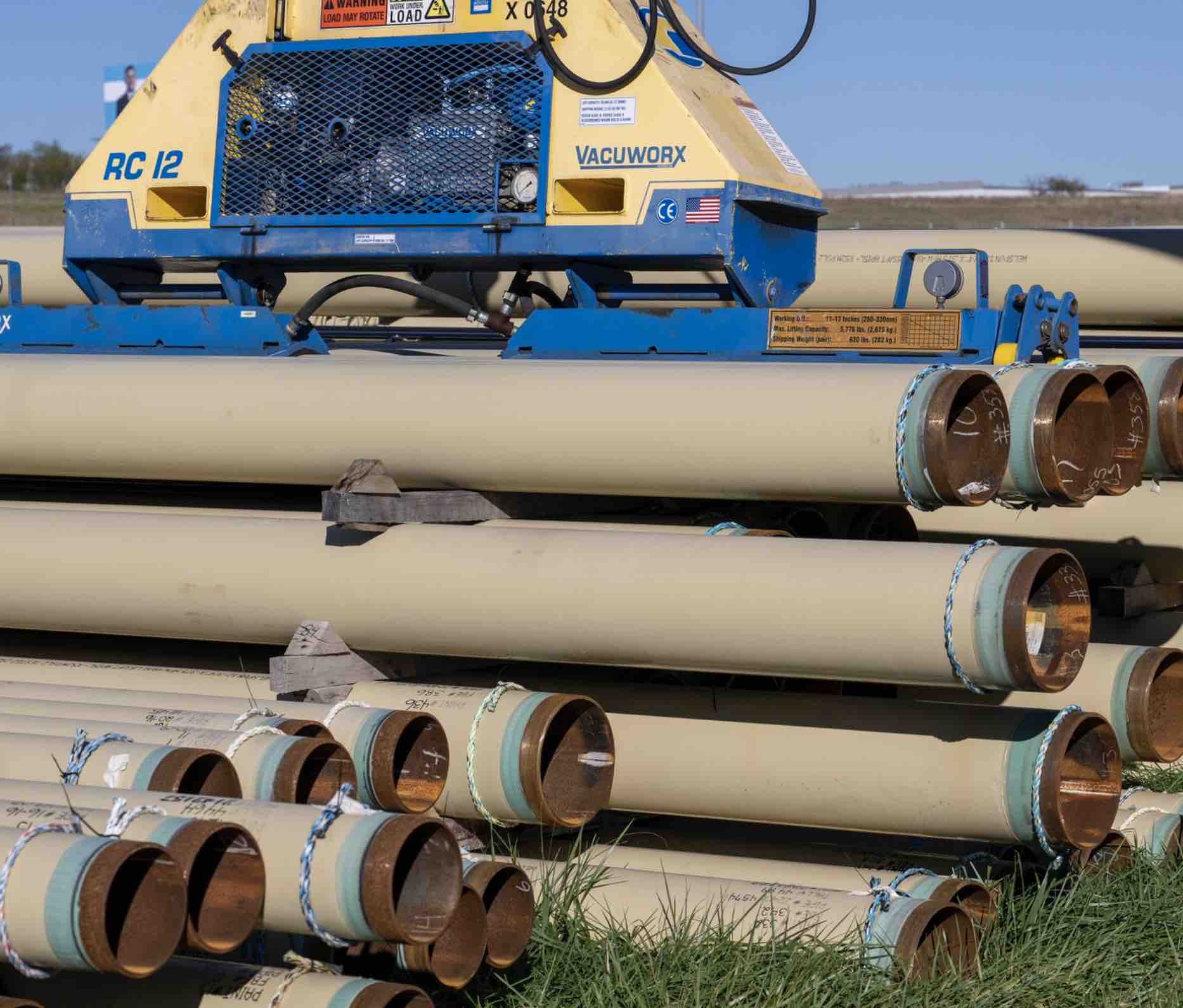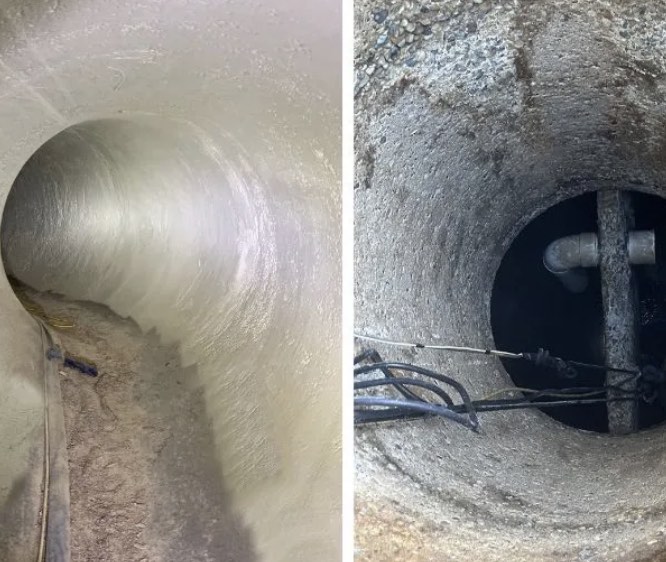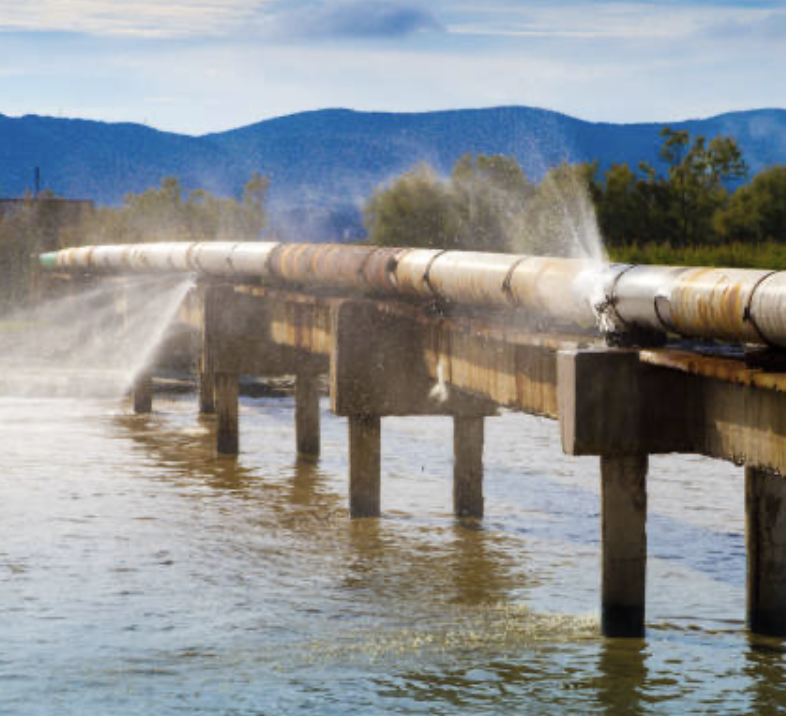
ARO Coatings: The Key to Pipe Protection
Discover how ARO pipe coatings revolutionize the durability and longevity of pipes used in harsh environments and challenging applications.
- Rick Gilbreath
How do ARO coatings compare to standard pipe coatings, including AWWA C210, and why industry professionals are increasingly choosing options like Tnemec Series 425.
ARO Pipe Coatings: Advanced Protection for Modern Infrastructure
In the world of infrastructure protection, the evolution of pipe coating technology has been remarkable. Among the latest advancements, Abrasion Resistant Overcoat (ARO) technology represents a significant leap forward in protecting critical piping systems. This blog explores ARO coatings, how they compare to standard pipe coatings including AWWA C210, and why industry professionals are increasingly choosing options like Tnemec Series 425.
Understanding ARO Pipe Coatings
Abrasion Resistant Overcoats (ARO) are specialized protective layers designed to shield pipe coatings from mechanical damage during transportation, installation, and service. Unlike traditional pipe coatings that focus primarily on corrosion protection, ARO systems are engineered specifically to withstand abrasion, impact, and other physical stresses that can compromise the integrity of the underlying coating system.
ARO coatings typically feature:
- High hardness ratings (often Shore D hardness of 70+)
- Superior impact resistance
- Excellent adhesion to base coatings
- Enhanced abrasion resistance measured in ASTM testing
- Flexibility to accommodate pipe movement during installation
ARO vs. Standard Pipe Coatings
Comparison with AWWA C210
AWWA C210 is a standard for liquid epoxy coating systems for the interior and exterior of steel water pipelines. While C210 coatings offer excellent corrosion protection, they have limitations when compared to ARO systems:
| Property | AWWA C210 | ARO Coatings |
|---|---|---|
| Primary Purpose | Corrosion protection | Mechanical damage protection |
| Thickness | 16-25 mils DFT (typical) | 25-40+ mils DFT (typical) |
| Impact Resistance | Moderate (30-40 in-lbs) | High (80-100+ in-lbs) |
| Abrasion Resistance | Moderate (70-90 mg loss, ASTM D4060) | Excellent (35-50 mg loss, ASTM D4060) |
| Service Temperature | Up to 140°F (typical) | Up to 180°F (system dependent) |
| Shore D Hardness | 75-85 (typical) | 80-90 (typical) |
The AWWA C210 standard requires:
- Minimum 2-coat system
- 16 mil minimum total DFT
- Adhesion testing per ASTM D4541
- Holiday testing
While these requirements make C210 coatings suitable for many water infrastructure applications, they generally lack the enhanced mechanical protection that ARO systems provide.
Other Standard Coatings vs. ARO
Standard pipe coatings include fusion-bonded epoxy (FBE), coal tar enamel, polyurethane, and tape wraps. Here's how ARO systems compare:
FBE (Fusion-Bonded Epoxy):
- FBE: Excellent corrosion protection, moderate abrasion resistance
- ARO: Maintains corrosion protection while significantly enhancing abrasion resistance
Coal Tar Enamel:
- Coal Tar: Good water resistance, limited temperature range, moderate impact resistance
- ARO: Superior impact resistance, wider temperature range, no environmental concerns
Tape Wrap Systems:
- Tape: Easy application, moderate protection, susceptible to soil stress
- ARO: Superior protection against soil stress, better resistance to groundwater
3-Layer Polyethylene/Polypropylene:
- 3L: Good corrosion protection with moderate mechanical protection
- ARO: Enhanced mechanical protection while maintaining or exceeding corrosion resistance
Where and Why to Use ARO Coatings

ARO coatings are particularly valuable in the following scenarios:
1. Horizontal Directional Drilling (HDD)
During HDD installations, pipes are subjected to extreme abrasion as they're pulled through soil and rock. ARO coatings protect the base coating system during this high-stress installation process.
2. Rocky Soil Conditions
In areas with rocky backfill or naturally rocky soil, pipes can face continuous abrasion throughout their service life. ARO systems provide long-term protection against this persistent threat.
3. High-Traffic Areas
Pipes installed under roadways, railways, or other high-vibration environments benefit from ARO's resistance to movement-induced wear.
4. Aggressive Soil Environments
When pipes are installed in soils with extreme pH levels or high concentrations of corrosive chemicals, the enhanced barrier protection of ARO systems offers extended service life.
5. Critical Infrastructure
For pipelines where failure is not an option (major water transmission lines, hazardous material transport, etc.), the added protection of ARO systems provides an extra margin of safety.
Tnemec Series 425: Setting the Standard for ARO
Tnemec Series 425 Perma-Glaze is a standout product in the ARO coating market. This advanced ceramic-modified epoxy represents the cutting edge in abrasion-resistant technology.
Key Features of Tnemec Series 425

- Ceramic Reinforcement: Incorporates specially engineered ceramic particles that enhance abrasion resistance while maintaining flexibility
- Ultra-Low Permeability: Near-zero permeation rates protect against a wide range of chemicals
- Superior Adhesion: Exceptional bond strength to properly prepared substrates and base coatings
- Application Versatility: Can be applied as a standalone system or as an overcoat
- VOC Compliance: Meets stringent environmental regulations with low VOC formulation
- Rapid Return to Service: Faster curing times compared to many competitors
- Color Stability: Maintains appearance even in UV exposure situations
Advantages Over Competitors
Tnemec Series 425 offers several advantages over competing ARO products:
1. Enhanced Abrasion Resistance
With a Taber Abrasion loss of approximately 40 mg (ASTM D4060, CS-17 wheel, 1,000 cycles), Series 425 outperforms many competitors that typically range from 50-80 mg loss.
2. Superior Chemical Resistance
The ceramic-modified formulation provides exceptional resistance to a broader range of chemicals than standard epoxies, including:
- Dilute acids and bases
- Petroleum products
- De-icing chemicals
- Agricultural chemicals
- Wastewater compounds
3. Longer Service Life
Independent testing suggests that Series 425 can extend service life by 20-30% compared to standard ARO coatings when subjected to similar conditions.
4. Wider Application Window
Series 425 can be applied at temperatures as low as 35°F, while many competitors require minimum temperatures of 50°F, extending the application season.
5. Better Edge Retention
The ceramic reinforcement provides superior edge retention, protecting vulnerable areas like welds, flanges, and other discontinuities.
6. Single-Source Solution
Tnemec offers compatible primers and intermediate coats, eliminating compatibility concerns that can arise when mixing different manufacturers' products.
Real-World Performance
Case studies demonstrate the effectiveness of ARO coatings like Tnemec Series 425:
Municipal Water Transmission Line (Colorado) A 48-inch water main installed through rocky terrain using Series 425 as an ARO showed zero coating failures after 5 years of service, despite being installed in an area where previous pipes with standard coatings had experienced multiple failures within 2-3 years.
Chemical Processing Facility (Texas) Process piping coated with Series 425 in a harsh chemical environment showed minimal wear after 7 years, while comparable piping with standard epoxy coatings required recoating after just 3 years.
Conclusion
ARO pipe coatings represent a significant advancement in infrastructure protection, offering substantially improved mechanical damage resistance compared to standard AWWA C210 and other traditional coating systems. For critical applications involving challenging installation methods or harsh service environments, ARO systems like Tnemec Series 425 deliver compelling advantages that justify their modest cost premium.
As infrastructure continues to age and replacement costs soar, the enhanced protection and extended service life provided by advanced ARO coatings make them an increasingly attractive option for forward-thinking engineers and asset managers focused on total lifecycle costs rather than initial installation expenses.
By understanding where and why to specify ARO coatings, industry professionals can make informed decisions that lead to more durable, reliable, and cost-effective infrastructure systems. We can help!

SIPP Technology: Pipeline Rehabilitation Done...
Sprayed in Place Pipe (SIPP) technology...

What Is The Role of High Performance Coatings in...
High performance coatings have transformed the...

What Are The Benefits of Protective Coatings On...
Discover why coating carbon steel pipelines is...